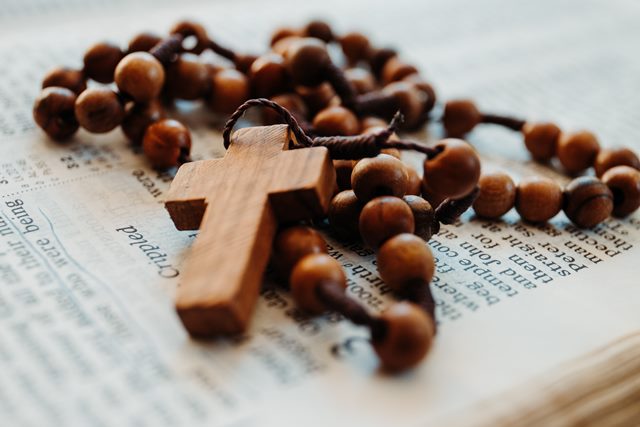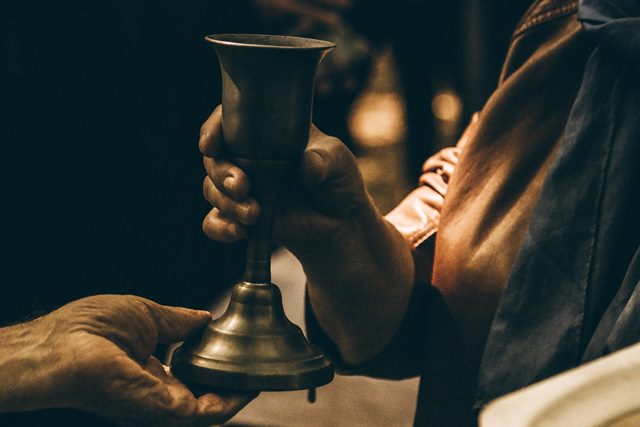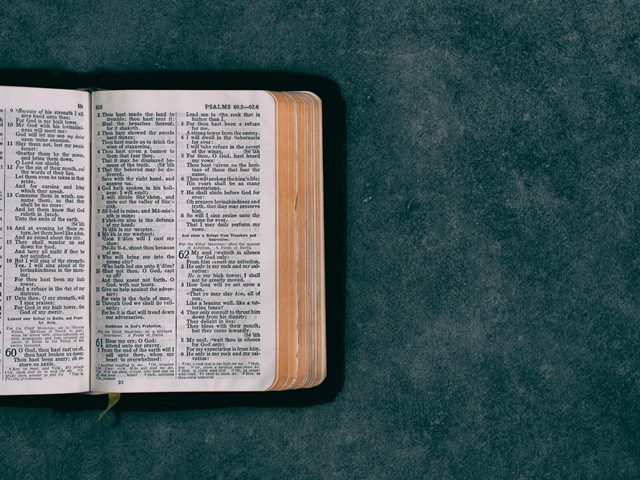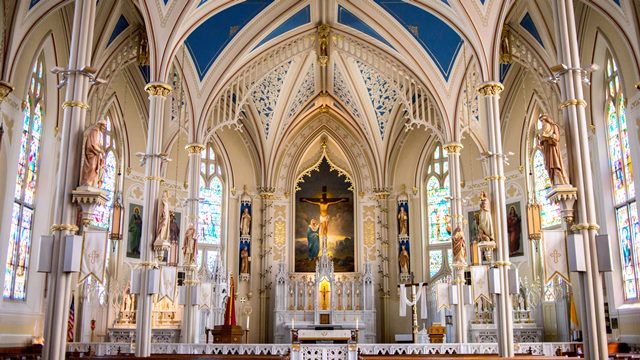Catholicism and Protestantism are two major Christian denominations that have a long history. Some may even call their history “complicated.” Like every other, both traditions trace their roots back to the teachings and ministry of Jesus Christ and the early Christian church. But they have developed significant differences over the centuries. So what are the differences between Catholic and Protestant beliefs, then?
Catholicism is the largest Christian denomination in the world, with more than 1.3 billion followers worldwide. On the other hand, Protestantism is a diverse group of denominations that emerged in the 16th century as a reaction to certain teachings and practices of the Catholic Church.
If you’ve been mixing these two Christian denominations up, you’re not alone. We’ll clarify the differences between Catholic and Protestant churches and everything you should know about the two beliefs.

How Catholicism and Protestantism Started
It is impossible to understand the development of Western civilization without some knowledge of the history of Christianity. This is because Christianity has been such an integral part of Western culture for so many centuries. The split between Catholicism and Protestantism in the sixteenth century was a major turning point in the history of Christianity, and it still has repercussions today. Hence, to understand the present, we must first trace the road to the past.
Beginning in the early 16th century, the Protestant Reformation divided the church into Catholic and Protestant groups. Martin Luther (1483-1546), a Catholic monk from Wittenberg, Germany, set out to reform the Roman Catholic Church but ended up founding a second Christian confession.
In his 95 Theses, he expressed his dissatisfaction with several aspects of the church, notably the sale of indulgences, which believers might purchase in order to atone for their sins. The proceeds from such auctions were used to support the construction of Rome’s new St. Peter’s cathedral. As a result, he would have supported these actions, but instead, he maintained that salvation was only possible via faith.
After 500 years, the Evangelical Church in Germany (EKD) and the Catholic Church have grown closer. Despite the efforts to reconcile, fundamental religious disagreements continue to divide the two churches to this day.

Key Practices That Bring Differences Between Catholic and Protestant Beliefs
One of the main differences between Catholic and Protestant denominations is their beliefs about the authority and role of the Church. Catholics believe in the authority of the Pope and the hierarchy of the Church. Protestants reject the idea of a central authority and emphasize the priesthood of all believers.
Another significant difference is their approach to salvation and the role of faith and works. Catholics believe that salvation is achieved through faith and good works, while Protestants generally emphasize faith alone as the means of salvation.
Other differences between Catholic and Protestant beliefs include their views on the sacraments, the role of tradition, and the interpretation of scripture. Despite these differences, both traditions share a common belief in the central tenets of Christianity, including the belief in one God, the divinity of Jesus, and the importance of love and compassion.
However, below is a detailed list of some of the key differences between Catholic and Protestant denominations:

Their Understanding of the Bible
Catholicism and Protestantism hold opposing perspectives on the meaning and authority of the Bible. Luther pointed out to Protestant Christians that the Bible is the “Sola Skriptura,” God’s only book in which He revealed Himself to the people and allowed them to enter into communion with Him.
Catholics, on the other hand, do not base their ideas solely on the Bible. They are bound by the traditions of the Roman Catholic Church in addition to the Holy Scriptures.
The Church Structure
The Catholic Church has a tight hierarchy among its clergy. The Pope is the leader of the Catholic Church and the ruler of Vatican City, the seat of the Roman Catholic Church’s power. This is an elective position, and the Cardinals are the ones that choose him. Below the Cardinals are the Arch-Bishops, Bishops, Priests, and Deacons.
Also, each role has a certain set of responsibilities and expectations. The Catholic faith defines itself as “one, holy, catholic, and apostolic Church” and “the continued presence of Jesus Christ on earth.”
On the other hand, depending on the denomination, Protestant churches appear in various ways. Some Protestant denominations, such as the Anglican or Lutheran faiths, were or now are state churches, such as the Church of Scotland or the Church of Sweden.
These churches are often led by a Pastor or Reverend, with some having lower clergy and the majority having deacons or elders. Protestant churches that are more Evangelical, Pentecostal, or Methodist typically have one pastor or Reverend, as well as deacons and elders.
However, some people use the title of Bishop. Lastly, some churches are led by clergy, while others delegate authority to their congregations.
We Design & Develop Websites, Android & iOS Apps
Looking to transform your digital presence? We specialize in creating stunning websites and powerful mobile apps for Android and iOS. Let us bring your vision to life with innovative, tailored solutions!
Get Started Today
The Eucharist
According to the Catholic Church, when a believer receives communion, he or she partakes in a sacred ordinance instituted by Christ at the Last Supper. The priests consecrate the bread and wine, the Eucharist when they are offered at communion.
The Catholic church believes this consecration results in the act of transformation – or change – in which the bread and wine become the genuine body and blood of Christ. This modification affects the substance of the thing rather than its appearance.
On the other hand, communion is also seen as a sacred activity by Protestant churches, having been instituted by Jesus at the Last Supper. Protestants also take communion seriously and believe that a believer actively in sin or living with unconfessed sin should repent before partaking in communion.
However, Protestants disagree with the notion of transubstantiation. They believe that when Jesus referred to the Bread and Wine as the Body and Blood, he was using figurative language. This means it should be interpreted symbolically rather than literally. As such, most Protestant churches see communion as a memorial of Christ’s death, meaning the bread and wine do not physically change.
Confession
There are also a few differences between Catholics and Protestants regarding the confession of sins. Of course, Catholics and Protestants agree that no one is righteous in their own right. They also believe that acknowledging sin is part of having a healthy relationship with God.
However, Catholics believe that serious sins, such as adultery and murder, should be confessed at least once a year to receive absolution through the Sacrament of Penance. Catholic confession is held between a believer and a priest. The latter is obligated by confidentiality not to reveal what is said in confession. And the priest typically assigns the believer a set of chores to complete in order to pay penance. These can involve saying specific prayers or apologizing.
On the other hand, Protestants typically embrace a concept known as the priesthood of the believer. It states that an individual can go directly to God through prayer and confess their sins rather than going through a priest.
The Total Number of the Books in the Bible (66 or 73)
Catholics and Protestants each have their own Bible. They all agree on 66 of these books, while the Catholic Bible includes a total of 73. Tobit, Judith, Wisdom, Sirach, Baruch, 1 Macabees, and 2 Macabees are the seven books in question. These manuscripts are classified as Apocrypha by Protestants and Deuterocanonical books by Catholics.
Catholics say that all 73 books were used for centuries based on two separate canons of the Old Testament. But Protestants rejected them because their doctrine was incompatible with the teachings of these scriptures.

Reasons Why the Protestants Removed 7 Books From the Bible
The number of books in the Bible is one of the key differences between Catholic and Protestant beliefs. Here are reasons why Protestant beliefs do not acknowledge The Apocrypha:
- The Apocrypha contains different doctrines to what the Holy Scripture teaches. For example, the books teach that a person is saved by works and not faith alone. The Apocrypha also teaches Purgatory.
- The Apocrypha says that God hears the prayers of the dead.
- Nowhere in the New Testament is The Apocrypha referenced. Many parts of the New Testament reference scriptures in the Old Testament. You’ll find scriptures saying, “It is written,” followed by biblical passages in the Old Testament. While there are some allusions, there is no direct quote from The Apocrypha anywhere in the New Testament.
- The Jews also reject The Apocrypha.
- The Apocrypha was written during the 400 “Silent Years.” That is the years between the end of the book of Malachi and the announcement of the birth of John the Baptist.
This and many more reasons are why Protestantism rejects the books in The Apocrypha.
The Catholic Church officially accepted the seven into the Bible in 1546 at the Council of Trent. Some Protestant churches, like the Anglican and the Lutheran Church, have them as part of the Apocrypha in their Bible.

Other Differences Between Catholic and Protestant Beliefs
The Role of Peter in Christianity
Both Catholics and Protestants agree that Peter was an important figure in Jesus’ mission and the early church. Protestants think he was instrumental in establishing the early church, citing Bible passages where he preached and his two epistles that were canonized.
Backing this up, historians agree that Peter was a key figure in the establishment and maintenance of the Jerusalem church and that he was martyred – most likely by crucifixion – during the reign of Emperor Nero.
However, Catholics believe that Peter was the first Pope, given the keys to the Church by Christ, and that all subsequent popes are his spiritual successors.
The Catholic Theory of the Pope
Protestants are completely opposed to papal primacy. This ideology, according to Evangelicals, contradicts statements in the Bible. Catholics regard the pope as the heir apparent of the Apostle Peter, the first head of their Church, who was appointed by Jesus. The papal office is justified by a purportedly unbroken series of consecrations dating back to the first century.
We Design & Develop Websites, Android & iOS Apps
Looking to transform your digital presence? We specialize in creating stunning websites and powerful mobile apps for Android and iOS. Let us bring your vision to life with innovative, tailored solutions!
Get Started TodayCelibacy
The concept of celibacy — the pledge of abstaining from marriage and sexual relations — is incorporated in some fashion by all major world faiths, including the Catholic and Protestant churches. Celibacy is required of priests in the Catholic Church. It is regarded as a sign of Christ’s undivided succession.
The Protestant Church opposes this responsibility for priests. Martin Luther called for its eradication as early as 1520. In 1525, the former monk married Katharina von Bora, a former nun.
Before you go…
Hey, thank you for reading this blog to the end. I hope it was helpful. Let me tell you a little bit about Nicholas Idoko Technologies. We help businesses and companies build an online presence by developing web, mobile, desktop, and blockchain applications.
We also help aspiring software developers and programmers learn the skills they need to have a successful career. Take your first step to becoming a programming boss by joining our Learn To Code academy today!
Be sure to contact us if you need more information or have any questions! We are readily available.
Put Your Tech Company on the Map!
Get featured on Nicholas Idoko’s Blog for just $200. Showcase your business, boost credibility, and reach a growing audience eager for tech solutions.
Publish Now









